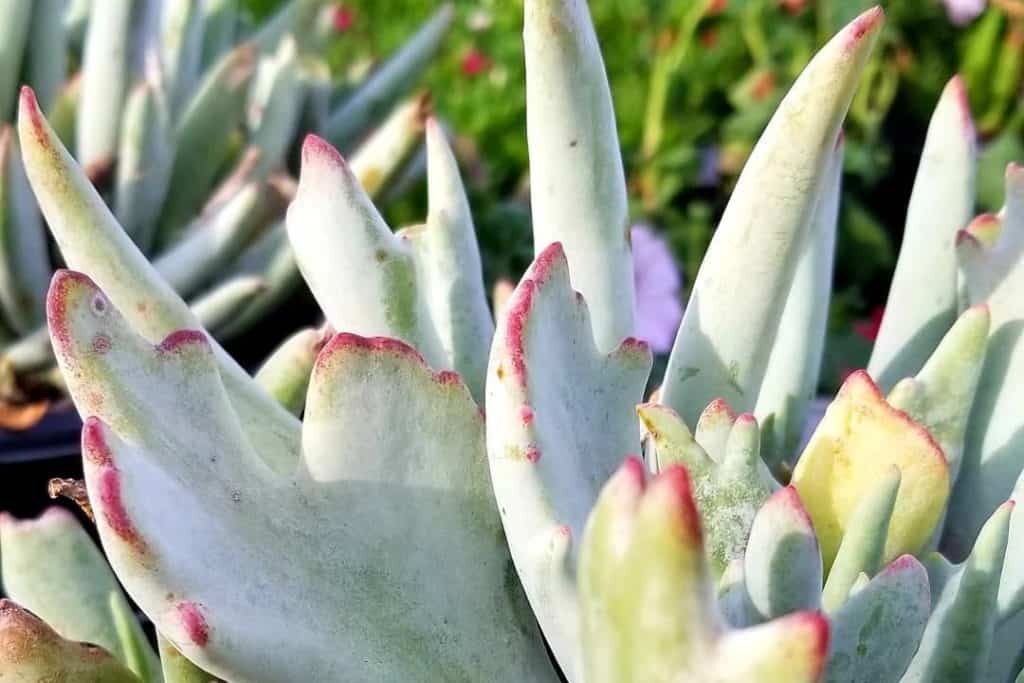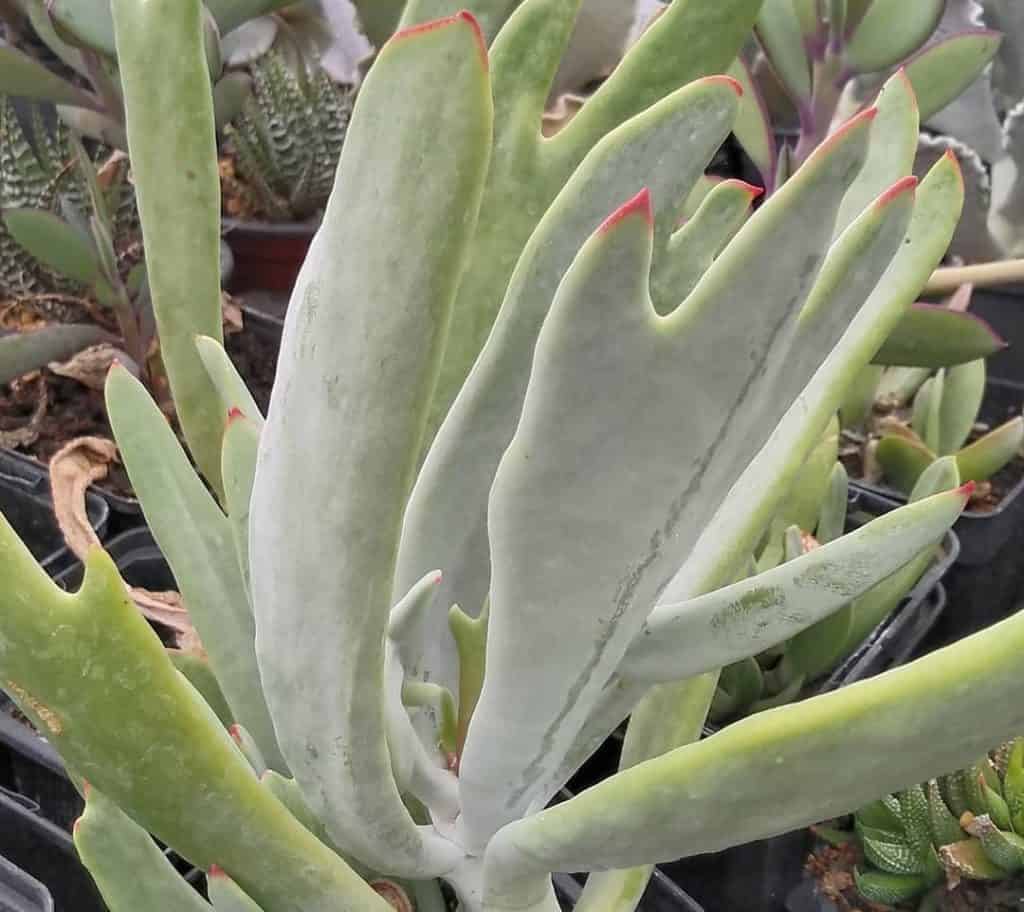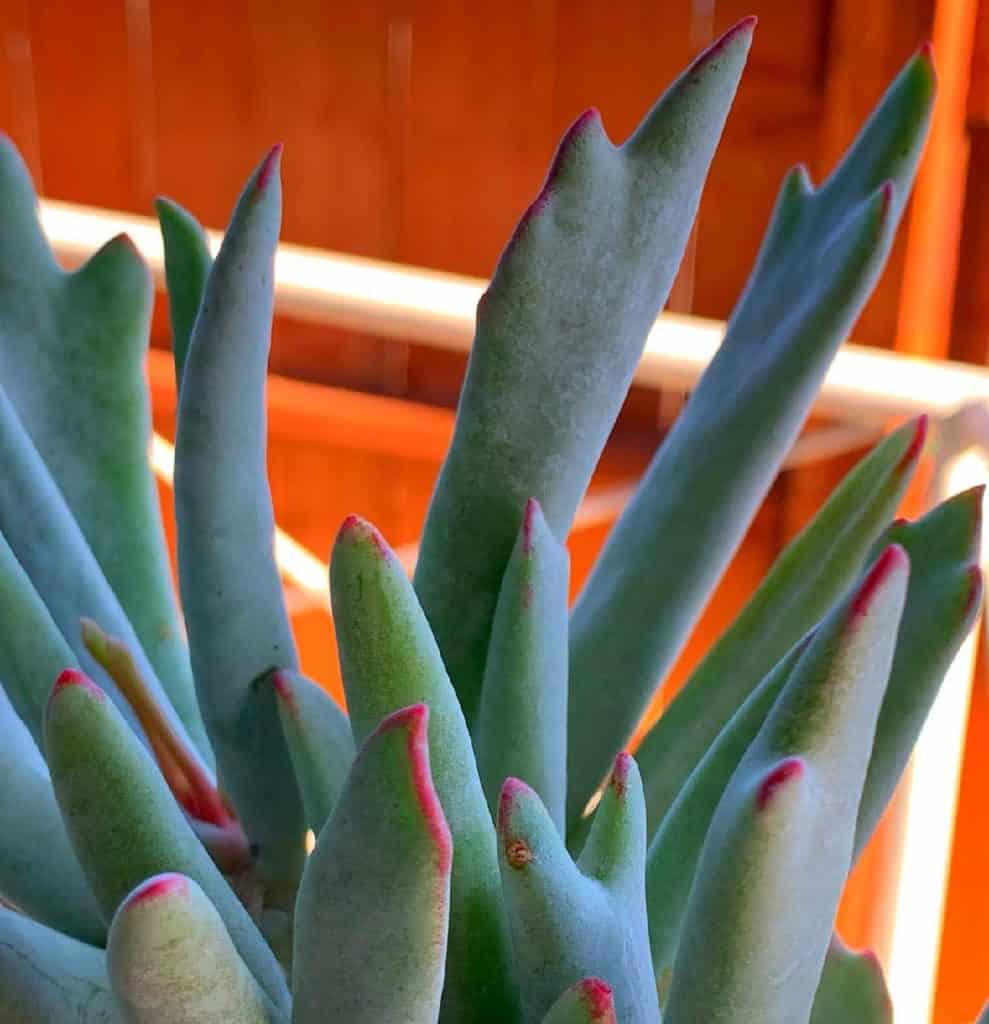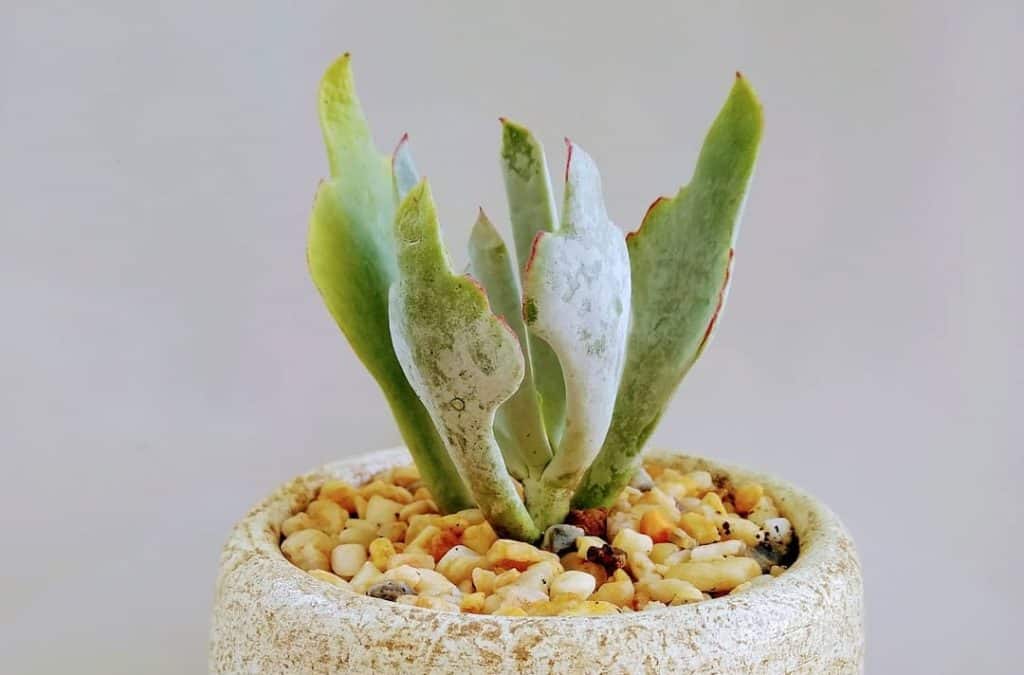Cotyledon orbiculata Staghorn: Characteristics and Care
If you’re a succulent enthusiast or simply someone who appreciates nature’s wonders, you’re in for a treat! The Cotyledon orbiculata Staghorn is a succulent like no other, boasting a unique charm that will leave you mesmerized. With its striking resemblance to a stag’s antlers, this South African native is sure to captivate your senses and ignite your curiosity.

Contents
About Cotyledon orbiculata Staghorn
Native to parts of South Africa, the Cotyledon orbiculata Staghorn belongs to the Crassulaceae family. Its erect, succulent leaves take on a distinctive green-gray hue, forming a captivating shape reminiscent of a stag’s horns – hence its name. Adding to its allure, the leaf tips boast a vibrant red border, while separate stems showcase bright red blooms during the summer months.
Related Post:
25 Types Of Cotyledon Succulents (With Pictures)
How To Care For Cotyledon orbiculata Staghorn
Light Requirements
Cotyledon orbiculata Staghorn thrives in abundant natural sunlight. While it can tolerate direct morning sun, intense afternoon rays may damage its leaves. For outdoor plants, use a sheet to protect them during peak sunlight hours. Indoors, position your staghorn succulent in a spot that receives partial sunlight throughout the day. If natural light is scarce, consider using a grow light to supplement its needs.

Watering Needs
Like most succulents, Cotyledon orbiculata Staghorn is sensitive to overwatering but can withstand underwatering to a reasonable degree. Excess moisture can lead to root rot, so it’s crucial to water only when the soil is dry up to a depth of 4 inches (10 cm). Plump, firm leaves indicate sufficient water storage, while soft leaves signal the need for hydration.
Avoid wetting the leaves, as this can lead to rotting and damage. During the summer months, water your plant every 5 to 7 days, adjusting as needed based on your climate. In winter, when the plant enters its active growth period, increase the watering frequency.

Soil Requirements
While Cotyledon orbiculata Staghorn isn’t too picky about soil quality, well-draining soil is crucial to prevent moisture accumulation around its roots. Choose a pre-made succulent potting mix or create your own by combining regular potting soil, sand, and perlite or pumice.
Temperature and Humidity
Accustomed to hot climates, Cotyledon orbiculata Staghorn thrives in high temperatures but cannot tolerate prolonged exposure to cold. Avoid temperatures below 45°F (7°C) for extended periods and protect your plant from frost, as temperatures below 20°F (-7°C) can be fatal.
Fertilizer
During their active growth period, Cotyledon orbiculata Staghorn can be nourished with fertilizers formulated for succulents about once a month. Use a succulent-specific fertilizer, diluting it according to the instructions, and apply it to the soil around the plant’s base. These specialized fertilizers provide the essential nutrients succulents need to thrive without overfeeding them. Be sure to follow the product’s guidelines for best results and avoid over-fertilizing, which can lead to root burn or other issues.
Pests and Problems
While generally hardy, Cotyledon orbiculata Staghorn can fall victim to common succulent pests like mealybugs and spider mites. Keep an eye out for signs of infestation and treat promptly with insecticidal soap or neem oil. Additionally, root rot can occur due to overwatering, so ensure proper drainage.
Pruning
Regular pruning isn’t necessary for Cotyledon orbiculata Staghorn, but you can remove any dead or damaged leaves to maintain its aesthetic appeal.
Potting and Repotting

Pot your Cotyledon orbiculata Staghorn in a well-draining container with drainage holes, using the appropriate soil mix. As the roots grow slower than the leaves, repotting is only required every two years, ideally in April.
Cotyledon orbiculata Staghorn Propagation
Cotyledon orbiculata Staghorn can be easily propagated through various methods, allowing you to multiply your collection or share with fellow succulent enthusiasts.
Leaf Cuttings:
- Remove a healthy leaf from the center of the rosette.
- Allow the leaf cutting to callus over for a day or two.
- Dip the calloused end in a rooting hormone powder (optional).
- Plant the leaf cutting in a well-draining succulent/cacti mix.
- Water sparingly and provide bright, indirect light.
- New rosettes will emerge from the leaf cutting over time.
- Once the new rosette develops roots, transplant it into a permanent pot.
Stem Cuttings:
- Using a clean, sharp knife or scissors, cut a stem from the main plant.
- Allow the cut end to callus over for a few days.
- Plant the stem cutting in a well-draining succulent/cacti mix.
- Water sparingly and provide bright, indirect light.
- Roots and new growth will emerge from the stem cutting.
- Once established, transplant into a permanent pot.
Seed Propagation:
- Collect seeds from the plant’s flowers after they have dried.
- Sow the seeds in a well-draining succulent/cacti mix.
- Cover the seeds lightly with a thin layer of the soil mix.
- Water gently and maintain consistent moisture until germination.
- Provide bright, indirect light and warmth.
- Once seedlings develop their first set of true leaves, transplant them into individual pots.
Whichever method you choose, patience and care will reward you with new Cotyledon orbiculata Staghorn plants to admire and share with others.
